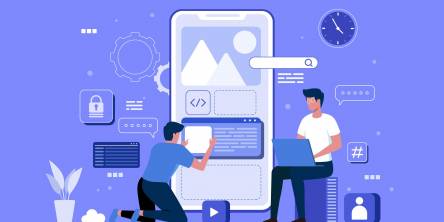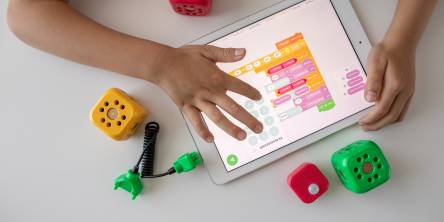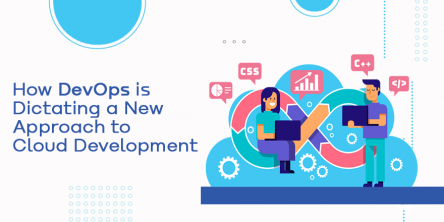Apps and the Future of Remote Healthcare
Mobile healthcare apps are completely transforming and revolutionizing the healthcare sector. Mobile apps are improving the communication, efficiency, and quality of healthcare services. Mobile apps can and are being used for online consultation, diagnosis, appointments, supply chain, etc.
Remote Patient Monitoring was still not prevalent in early 2020. The incentive to offer such services was not much and most people prefer face-to-face interaction. Payments and reimbursement methods were another question mark. Then the pandemic made everyone look for alternative physical visits to the doctor and gave the much-needed impetus for increased use of digital technologies in health care services. With this Remote Patient Monitoring has gained rapid strides and is now increasingly prevalent.
The most common and apparent uses of such Remote monitoring via mobile apps are
1. It facilitates immediate access by helping schedule appointments online. It gives easy access to doctors and specialists. In remote area locations, this type of monitoring is even more useful. It helps cut down on travel (where applicable) and the cost of traveling. It is of particular help to elderly patients and people who have chronic health problems.
2. It can help in emergencies by handling emergency cases by notifying the doctor(s).
3. It improves coordination between the patient and hospital staff and doctor(s). It can provide real-time feedback and updates about the health of the patient.
4. Data collection is a continuous process and such apps actively collect data and can send the same to the relevant person(s).
5. Apps used in mobiles or fitness bands and watches keep continuous track of daily activities and health parameters. These logs of health parameters and activity are stored in relevant servers, be it at hospitals or any other health-related service organization.
6. Such apps have been particularly helpful in recent pandemic situations, wherein doctors have had face-to-face conversations and consultations via the app with the patient. This has proved to be extremely helpful.
7. Apps in watches or fitness bands can monitor heart activity and oxygen intake or shortfall. Many apps now directly send alerts to hospitals and family members including the location of the patient.
8. Apps also store patient history, and such information becomes relevant when the patient is monitored remotely or from a distance.
9. Besides heart rate, and oxygen levels, Apps now also monitor weight, blood pressure, cholesterol, and sugar levels, sleep quality, water consumption, and in some cases even cancer.
10. Remote monitoring can also help keep track of medicines and doctors or health staff can remotely add or change medicines required by looking at the patient’s data.
11. Apps and their utility gives immediate access and makes Remote Patient Monitoring useful and viable.
Custom enterprise app development services designed for and around healthcare should have;
•Patient-oriented UI - It should be easily understood by any person, and should have easy-to-use navigation and a simple user interface (UI).
•Secure - The app must have all security compliances in place and should match all international standards.
•Data Integration - The app must be able to easily transfer data between the patient and the healthcare service in a secure way.
•Graphical interface - It must be able to engage the patient with easy-to-understand graphics. Representation of data in graphical format is reassuring.
•Analytics – It is necessary to generate data in usable form, showing health patterns, and trends in tabular and graphical formats.
•Connectivity - The data should be stored so that even if there are connection issues, the app should be able to sync immediately on reconnection.
•Battery optimization – It is necessary since apps run continuously in the background collecting data.
•Updates - Since app development is not a one-time process, apps must be updated to integrate details as needed.
Types of Remote Patient Monitoring apps.
•IoT medical apps – They’re part of wearable gadgets like a watch or a band. Apps generate data from these devices. Since the data is in real-time it ensures proactive treatment.
•Video conferencing apps - They enable patient care from home. These are practical and comfortable options, save on travel, and are especially useful to elderly or disabled people. These are valuable tools in times like the pandemic.
•Questionnaires – One of the popular ways of gathering health data and information. This method is less complex and low budget.
•Payments - reimbursements are easy and efficient and are one of the key advantages of remote healthcare. Mobile technology makes it possible to pay securely from wherever the person is. Recent updates now also allow payments from apps from feature mobile phones, making it one of the easiest and preferred ways of making payments.
It is becoming increasingly clear that Remote Patient Monitoring, i.e monitoring a patient’s health from a distance is nowhere to stay and a much-needed change in perception. The future may see the use of AR and AI in monitoring environments to give patients better care remotely.
Similar Articles
In the dynamic realm of mobile app development, Continuous Integration (CI) and Continuous Deployment (CD) have become crucial practices to ensure the efficient and reliable delivery of high-quality applications. CI/CD pipelines play a pivotal role in automating the integration of changes from various developers and deploying applications to production environments.
Mobiles and by extension, mobile apps are the basis for the modern mobile device and take it beyond a mere communication tool. In today’s world, information has to be available at our fingertips and people want mobile applications to do instantly what websites used to do before, give information and details instantly, anytime & anywhere
In the ever-evolving landscape of app development, embracing innovation is not just a choice but a necessity. Enter serverless architecture, a transformative paradigm reshaping how we approach app development.
EdTech developers leverage modern technology to create immersive and engaging learning apps. A successful product relies on solid technology, including front-end frameworks like React.js, offering efficient development and incorporating cutting-edge features like gamification and voice recognition for a standout user experience in the education industry
Internet of Things, or IoT, is a fast-growing concept that promises a transformation in how we live and work. It enables us to connect and control smart devices such as wearables, medical devices, sensors & more using mobile apps. IoT has impacted many aspects of our lives, and some of the most notable are home building, logistics, healthcare, and more.
Mobile app development has become an essential part of the digital ecosystem as mobile devices have become more prevalent than desktops or laptops. Regarding mobile app development, two popular approaches are Xamarin and native mobile app development.
With React Native becoming one of the preferred tools for developing mobile and web apps, there has been a growing focus on outsourcing software development based on this language
With over 6.3 billion estimated smartphone users worldwide, mobile app usage is growing exponentially. Studies have shown that Americans check their phones 262 times daily, once every 5.5 minutes! People check their phones at home, at work, on the street, while eating, in bed, and cars.
With the number of companies embracing digital solutions growing continuously, there is also an increasing demand for cloud services. Cloud development services help businesses (small or big) take advantage of digital transformation and to move their infrastructures to the cloud.









